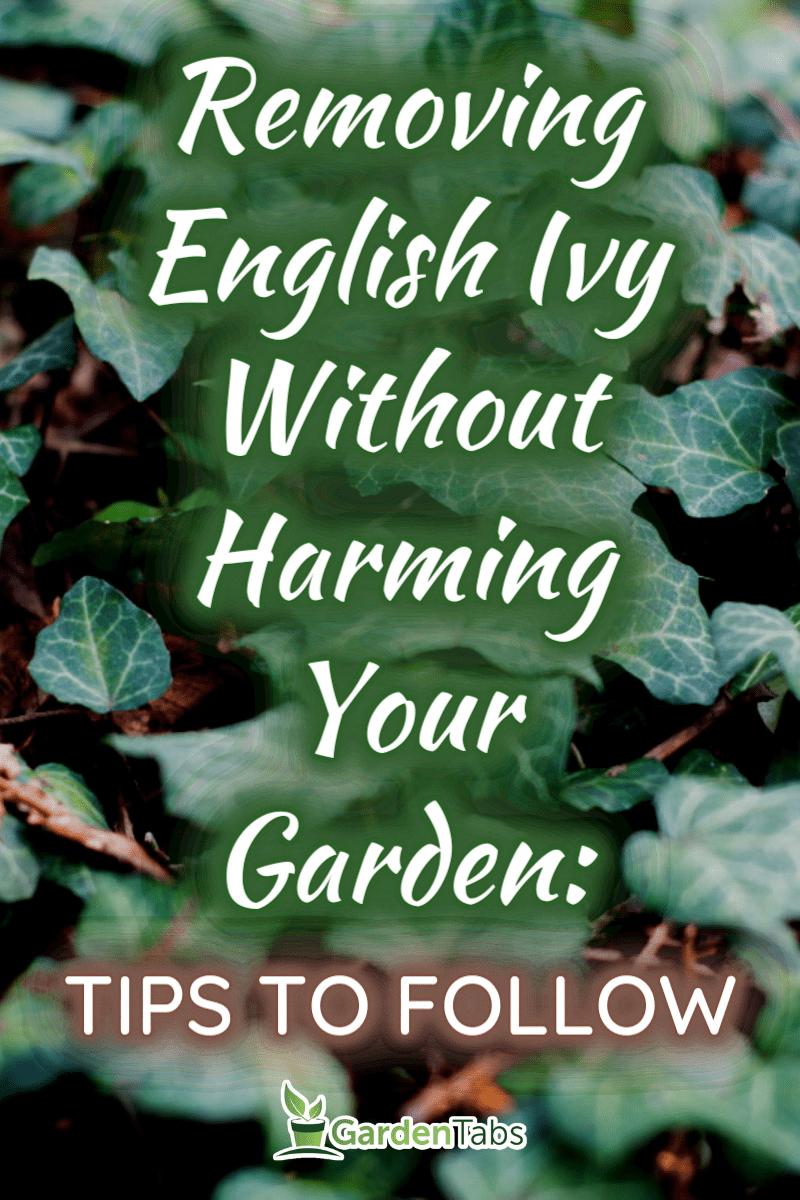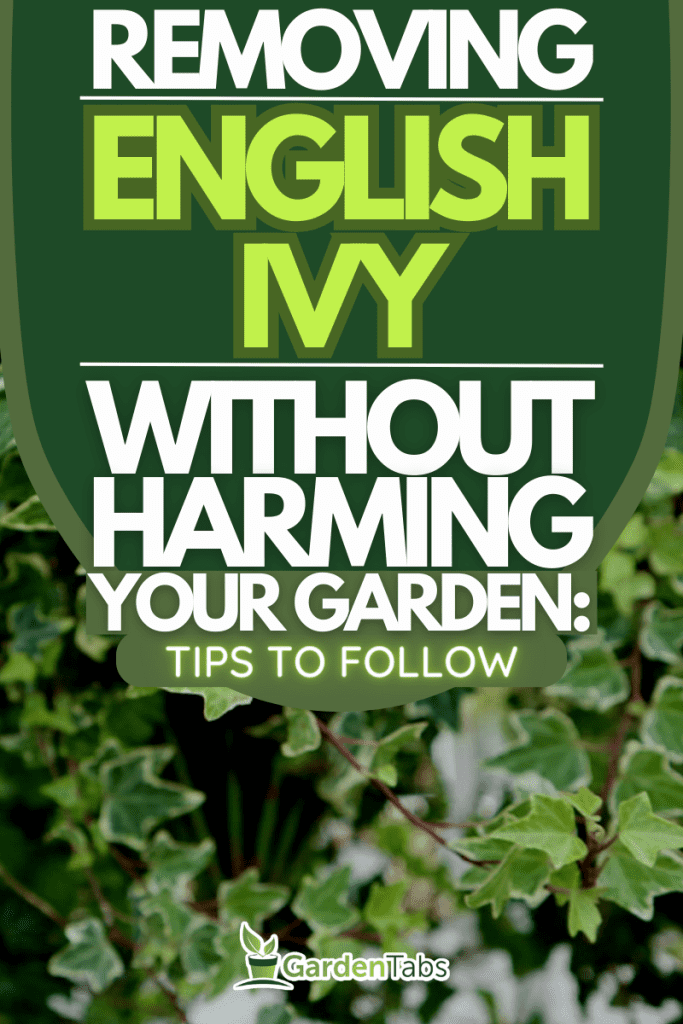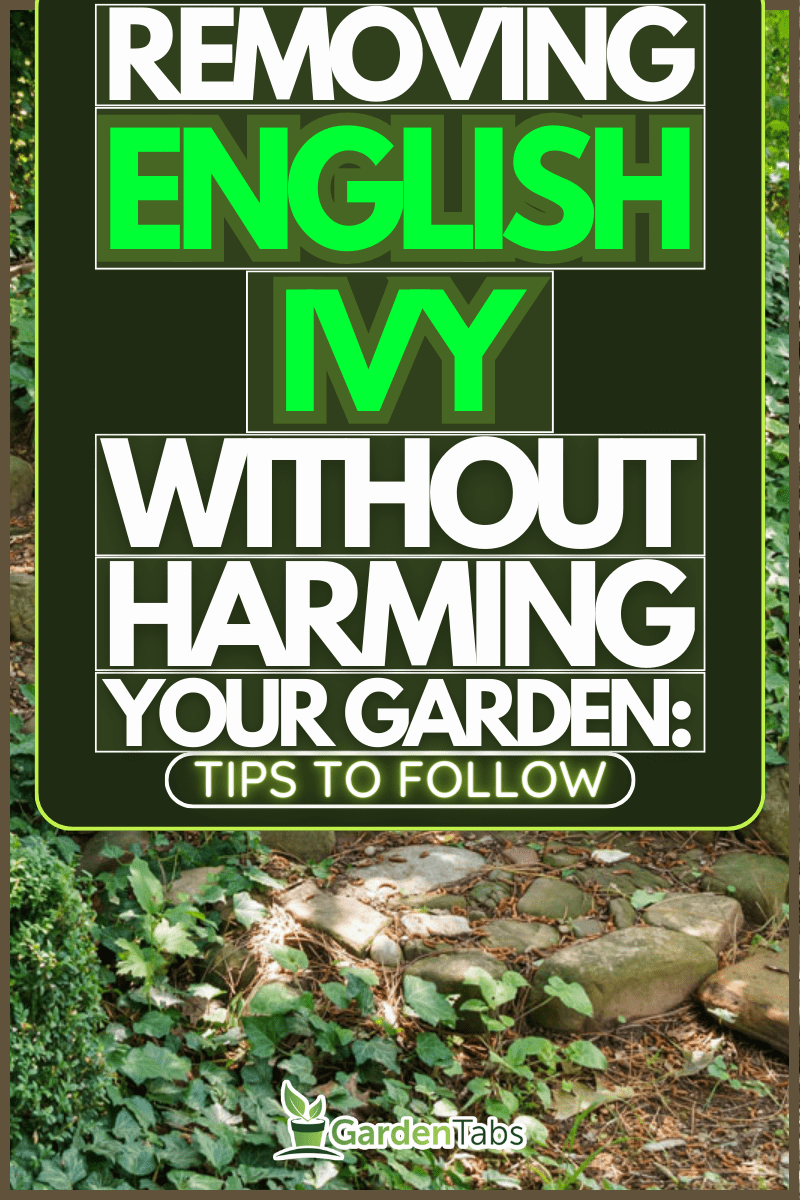Are you tired of battling English ivy in your garden or yard? You're not alone.
While this plant can add a touch of elegance to any landscape, it can quickly become invasive and take over other plants.
But what if we told you there's a way to get rid of English ivy without harming your other plants?
Yes, you read that right.
In this article, we'll share some effective methods for safely removing English ivy without killing other plants.
From manual removal to natural remedies and chemical solutions, we'll provide you with the information you need to effectively get rid of English ivy.
Plus, we'll share tips on preventing it from coming back.
So, if you're ready to say goodbye to English ivy for good, keep reading.
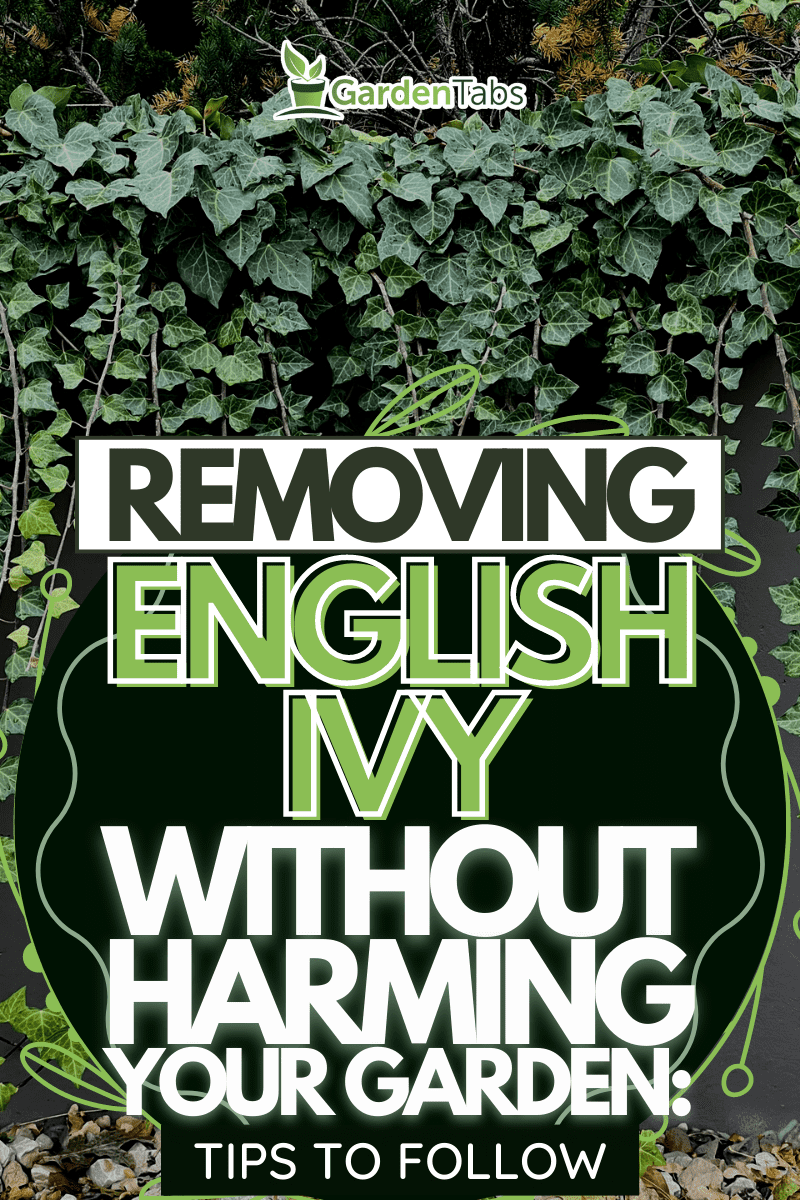
Why Remove English Ivy
English ivy can be a beautiful addition to any garden or outdoor space, but it can also be incredibly invasive and destructive.
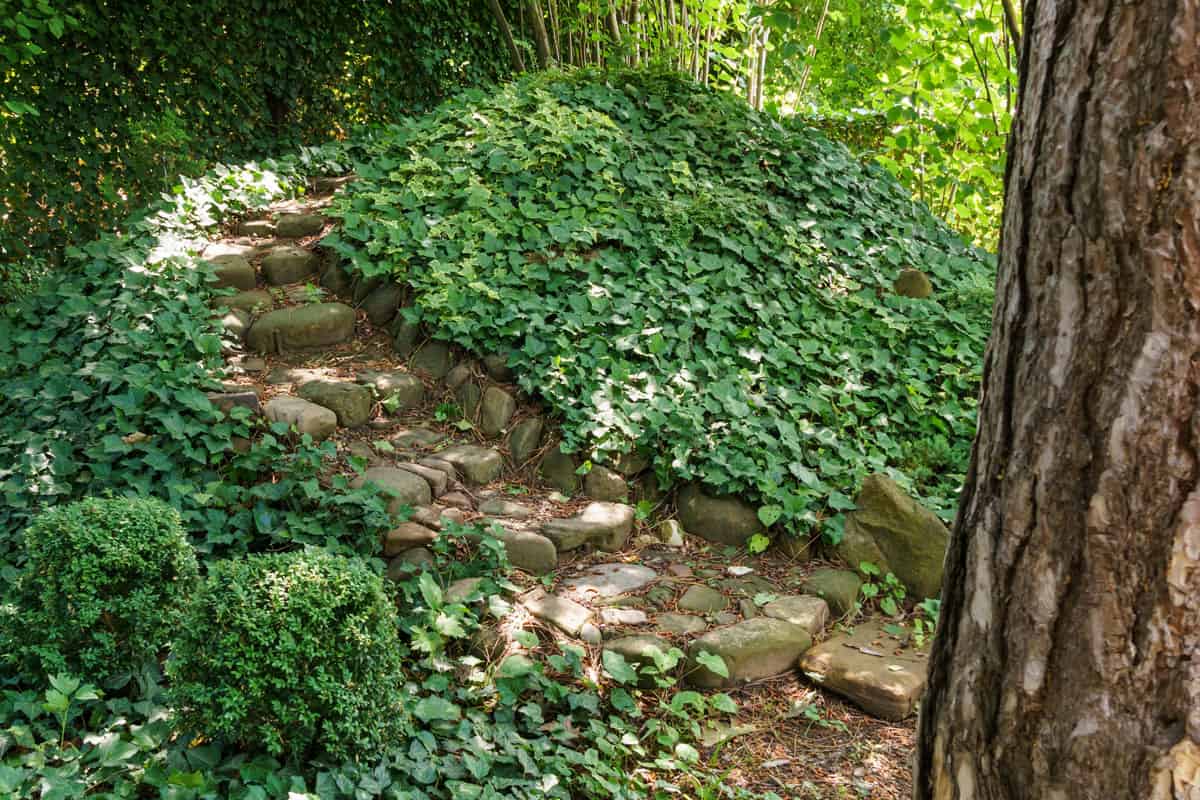
If left unchecked, English Ivy can quickly take over your yard or garden and smother other plants and trees.
It can cause significant damage to your property.
One of the primary reasons for removing English ivy is to protect the health of other plants and trees in your yard.
Ivy can grow quickly and aggressively, wrapping around other plants and trees and suffocating them.
This can lead to stunted growth, weakened immune systems, and even death in some cases.
As the vines grow and spread, they can damage walls, fences, and other structures.
Ivy can also create a breeding ground for pests and rodents, which can cause further damage to your property.
Finally, removing English ivy can help to improve the overall aesthetic of your yard or garden.
Ivy can quickly become unsightly and overgrown, making it difficult to maintain a neat and tidy outdoor space.
By removing the ivy, you can create a more attractive and welcoming outdoor environment.
Overall, removing English ivy is an essential step in maintaining a healthy and beautiful yard or garden.
Understanding English Ivy
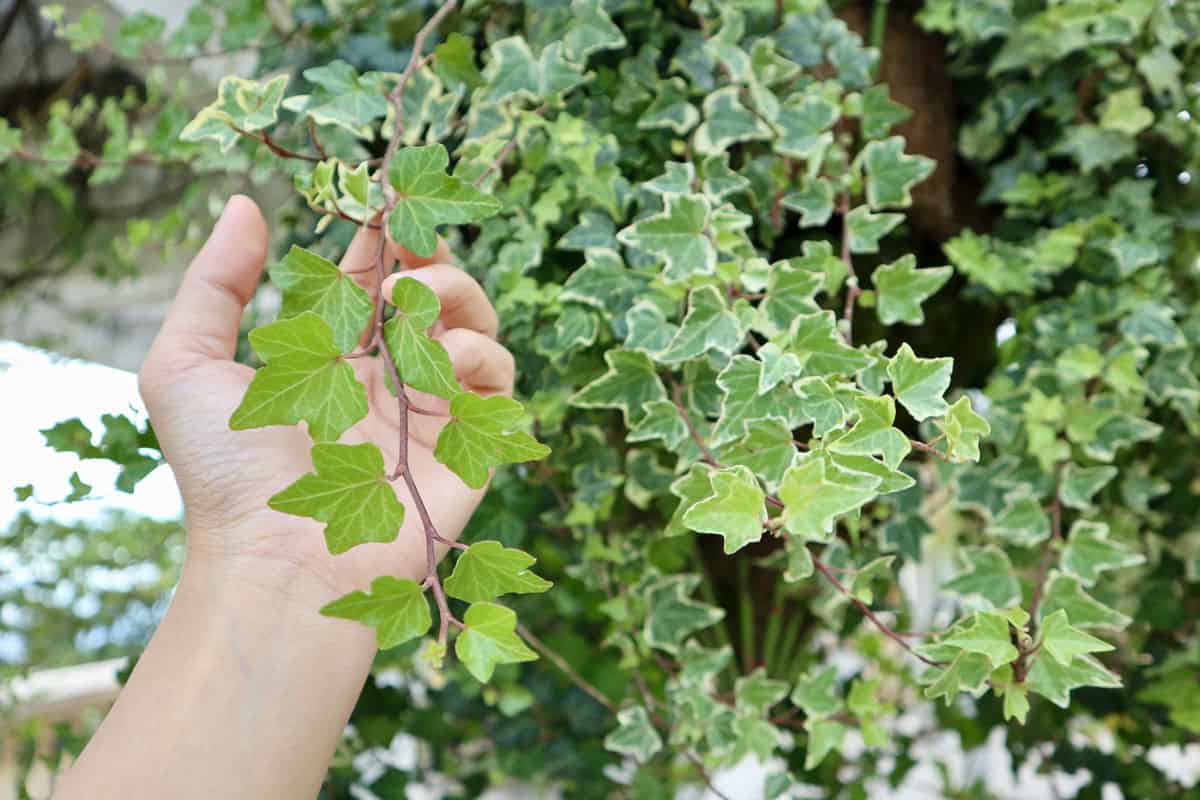
English ivy is a common plant found in gardens, parks, and forests.
It is an evergreen vine that can grow up to 100 feet long and climb trees, walls, and anything in its path.
While it may look beautiful and add a touch of greenery to your garden, it can quickly become invasive and damage other plants in the area.
English ivy is known for its ability to spread rapidly and choke out other plants.
It does this by forming a dense mat of leaves that blocks sunlight and prevents other plants from growing.
One of the biggest challenges of removing English ivy is its strong root system, which can be difficult to completely eradicate.
If even a small piece of the root is left behind, the plant can quickly grow back and take over the area once again.
It's important to note that while English ivy can be harmful to other plants, it does have some benefits.
It provides shelter and food for wildlife, and its leaves can help reduce air pollution by absorbing toxins.
Overall, English ivy can be a beautiful addition to your garden, but it's important to keep it under control to prevent it from becoming invasive and damaging other plants in the area.
Methods for Removing English Ivy

In this section, we will discuss two methods for removing English ivy: manual and chemical.
Manual Removal
Manual removal is the most labor-intensive method of getting rid of English ivy.
It involves physically pulling the ivy from the ground or trees.
This method is best suited for small areas or when you want to avoid using chemicals.
Here are the steps to follow:
- Wear gloves and protective clothing to avoid getting scratched by the ivy's leaves.
- Start by cutting the ivy stems at the base of the plant using pruners or shears.
- Use a shovel or trowel to dig up the roots and remove them from the ground.
- If the ivy has grown up trees, gently pull the stems away from the bark and cut them at the base. Then pull the stems down from the tree.
- Dispose of the ivy in a yard waste bin or compost pile. Do not throw it in the trash, as it can still grow and spread.


Check out these pruning shears on Amazon.
Chemical Removal
Chemical removal is a faster method of getting rid of English ivy, but it can harm other plants and animals if not used properly.
Always follow the instructions on the label and wear protective clothing when using chemicals.
Here are some common chemical options:
Glyphosate
Spray the ivy with a glyphosate-based herbicide. Wait for the ivy to die before removing it.
Glyphosate can harm other plants, so avoid spraying it on windy days or near desirable plants.
Triclopyr
Mix triclopyr with water and spray it on the ivy's leaves. Wait for the ivy to die before removing it.
Triclopyr is less harmful to other plants than glyphosate, but still, use caution when applying it.
Vinegar
Mix vinegar with water and spray it on the ivy's leaves. Repeat every few days until the ivy dies.
Vinegar is a natural herbicide, but it can harm other plants if applied in large quantities.
It is important to choose the method that works best for your situation and to always follow the instructions carefully.
Natural Methods for Killing Ivy
There are several natural options for killing English ivy that do not harm other plants or animals.
However, these methods may take longer and require more effort than chemical options. Here are some natural options:
- Boiling water: Pour boiling water on the ivy's roots to kill it.
- Covering: Cover the ivy with a tarp or black plastic to block sunlight and kill it over time.
- Smothering: Cover the ivy with mulch, leaves, or other organic material to smother it and prevent it from growing.
- Cutting: Cut the ivy stems and cover them with salt to prevent regrowth.
How to Preventing English Ivy from Returning
Preventing English ivy from returning is crucial for maintaining a healthy, beautiful garden or yard.
Here are some effective ways to prevent English ivy from returning.
Cultivate other plants
When trying to prevent English ivy from returning, you can add plants that may compete with it, including the following.
- Creeping phlox
- Aster
- Solomon's seal
Adding these resistant plants to your garden or yard can help prevent ivy from returning.
Other tips
In addition to planting resistant plants, there are other tips you can follow to prevent ivy from returning:
- Regularly trim ivy to prevent it from attaching to trees or other plants.
- Remove any new ivy growth as soon as it appears.
- Apply a layer of mulch around plants to prevent ivy from taking root.
- Use a weed barrier fabric to prevent ivy from growing through the soil.
- Regularly inspect your garden or yard for any signs of new ivy growth.
By following these tips, you can prevent English ivy from returning and taking over your garden or yard.
Wrapping Up
Removing English ivy without harming other plants is not that difficult.
By following the right methods and precautions, you can safely and effectively get rid of this invasive plant.
Don't let English ivy take over your landscape! With the solutions covered in this post, you can say goodbye to your English ivy woes for good.
You might also like: 19 Weeds That Look Like Grass [And How To Get Rid Of Them]; Is Black-Eyed Susan Invasive?



